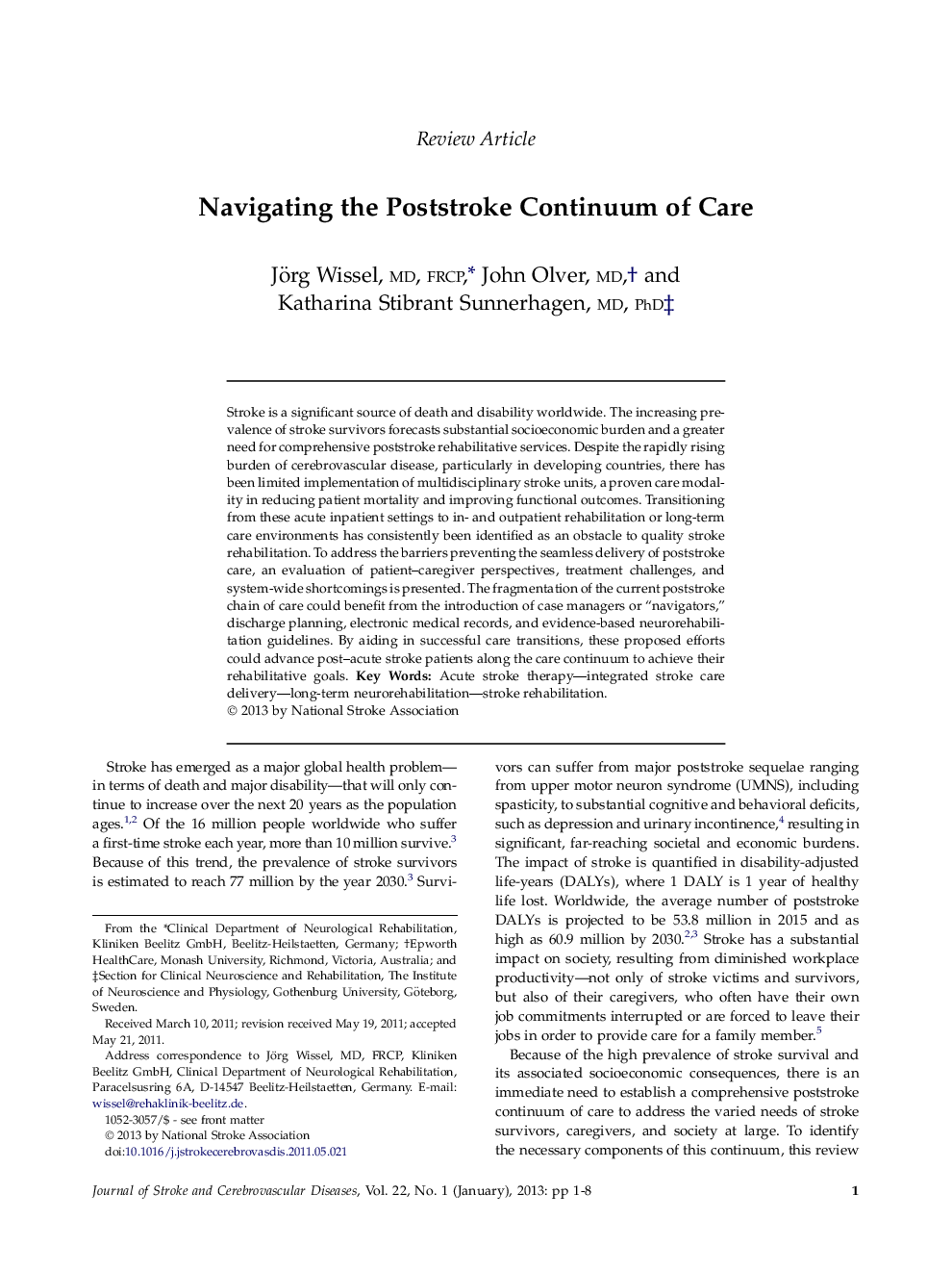| Article ID | Journal | Published Year | Pages | File Type |
|---|---|---|---|---|
| 2701996 | Journal of Stroke and Cerebrovascular Diseases | 2013 | 8 Pages |
Stroke is a significant source of death and disability worldwide. The increasing prevalence of stroke survivors forecasts substantial socioeconomic burden and a greater need for comprehensive poststroke rehabilitative services. Despite the rapidly rising burden of cerebrovascular disease, particularly in developing countries, there has been limited implementation of multidisciplinary stroke units, a proven care modality in reducing patient mortality and improving functional outcomes. Transitioning from these acute inpatient settings to in- and outpatient rehabilitation or long-term care environments has consistently been identified as an obstacle to quality stroke rehabilitation. To address the barriers preventing the seamless delivery of poststroke care, an evaluation of patient–caregiver perspectives, treatment challenges, and system-wide shortcomings is presented. The fragmentation of the current poststroke chain of care could benefit from the introduction of case managers or “navigators,” discharge planning, electronic medical records, and evidence-based neurorehabilitation guidelines. By aiding in successful care transitions, these proposed efforts could advance post–acute stroke patients along the care continuum to achieve their rehabilitative goals.
